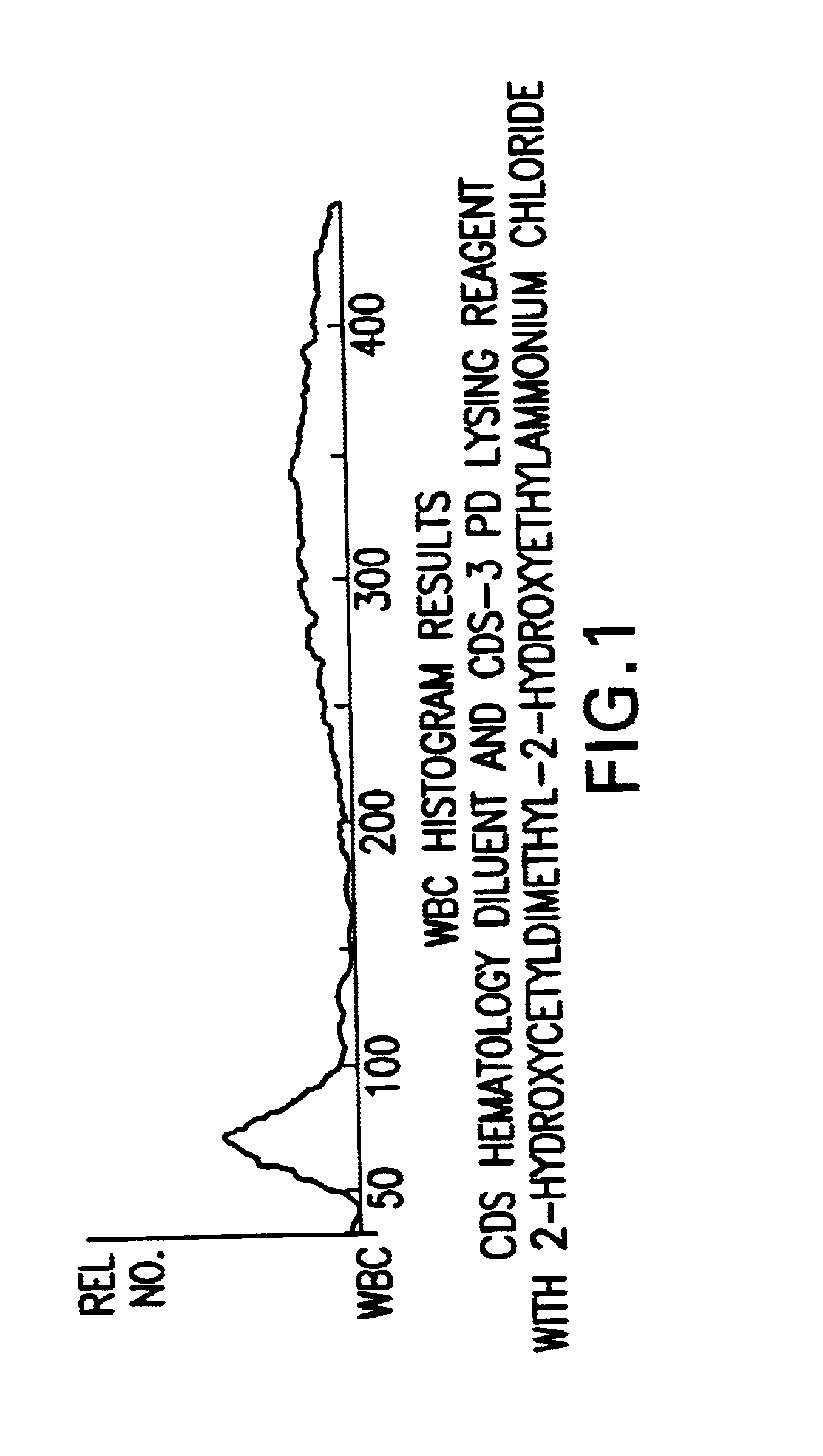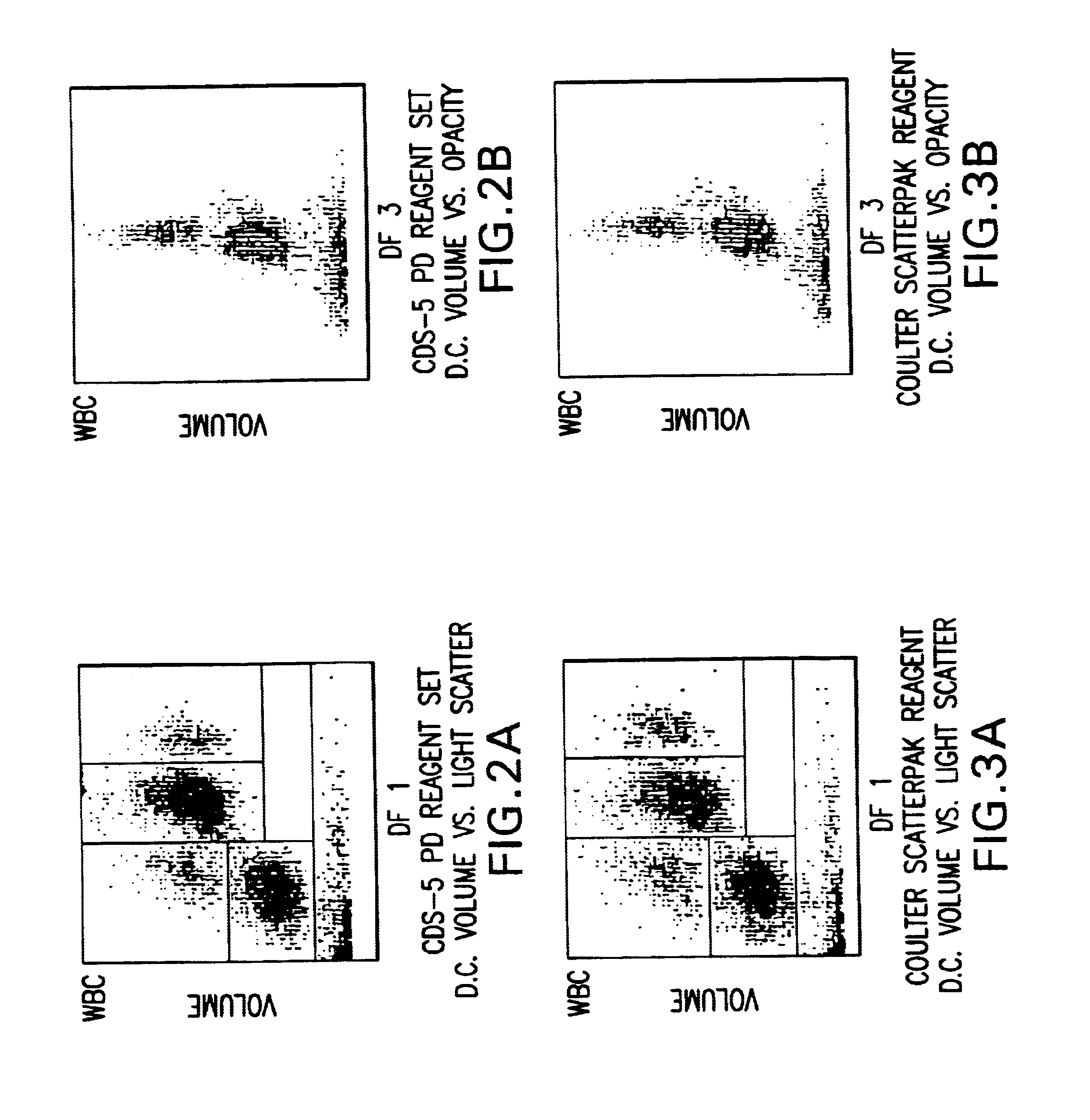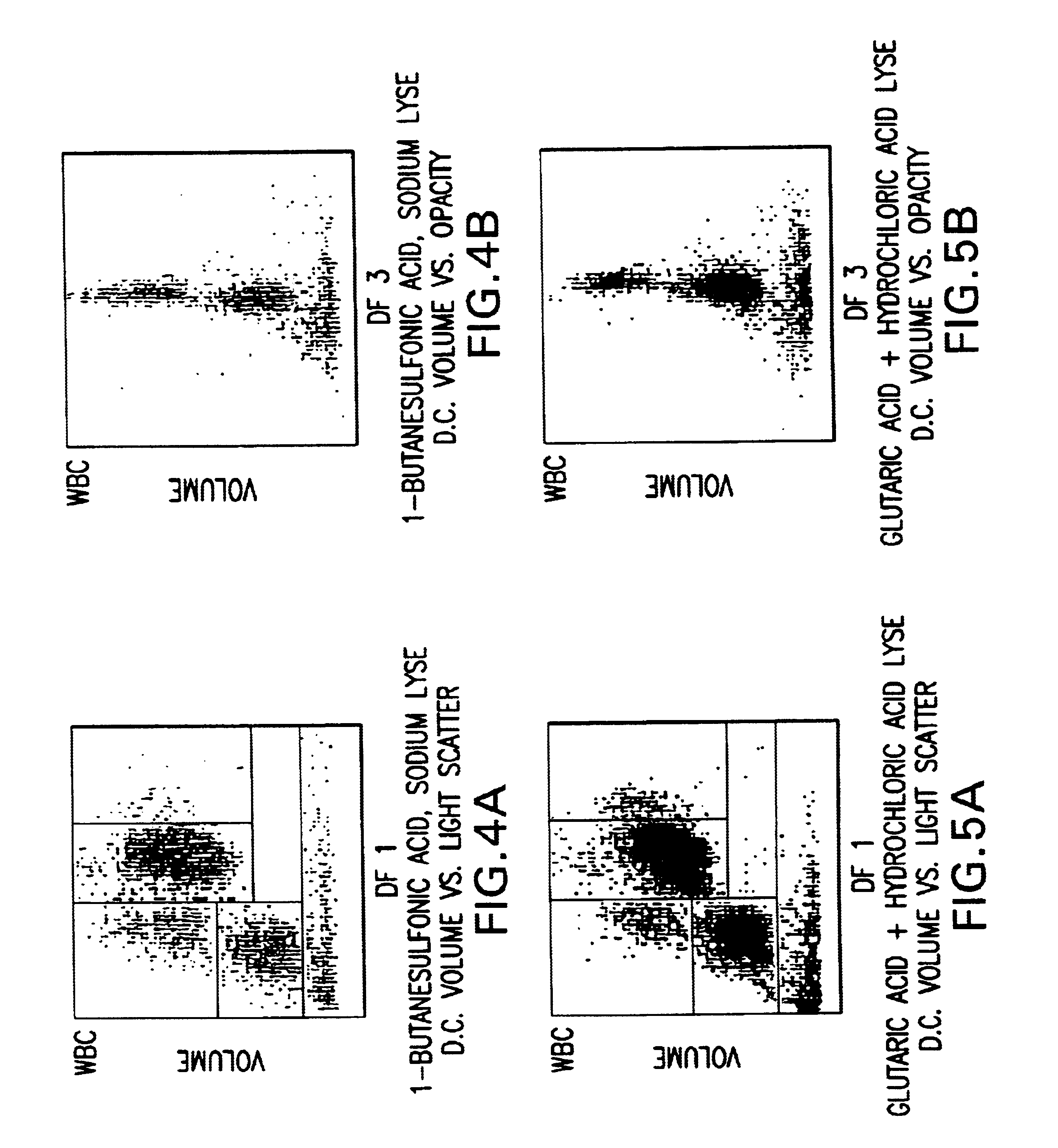Multi-purpose reagent system and method for enumeration of red blood cells, white blood cells and thrombocytes and differential determination of white blood cells
a multi-purpose reagent and reagent technology, applied in chemical methods analysis, dead animal preservation, instruments, etc., can solve problems such as medical consequences, error flag generation, and inaccuracy and possible misclassification
- Summary
- Abstract
- Description
- Claims
- Application Information
AI Technical Summary
Benefits of technology
Problems solved by technology
Method used
Image
Examples
example 1
shows one possible composition of the diluent reagent and the strong lytic reagent, and is illustrative of a composition of matter to practice this invention.
example i
A hematology diluent reagent, as described above, was prepared from standard National Formulary, United States Pharmacopoeia or American Chemical Society grade chemicals, containing:
1.57% (w / v) sodium sulfate, anhydrous
0.19% (w / v) citric acid, anhydrous
0.13% (w / v) sodium hydroxide (approximate)
0.1% (w / v) disodium EDTA dihydrate
0.011% (w / v) procaine hydrochloride
0.0025% (w / v) Bronidox-L (Henkel, Emery Group, 5-bromo-5-nitro-1,3-dioxane)
0.05% (w / v) Proclin 150 (Supelco antimicrobial mixture)
0.2% (w / v) Germall II (ISP Technologies, diazolidinyl urea)
Diluted to 1 liter with deionized water and filtered through a 0.2 micron filter to remove small particulates.
The pH was about 7.0 to 7.2, the osmolality was about 295 to about 325 milliosmoles / kg and the conductivity was about 19.4 to about 19.7 milliSiemens / cm.
A three-part differential lysing reagent was prepared from standard, commercial grade quaternary ammonium salt compounds containing:
5.8% (w / v) dodecyltrimethylammonium chloride (Akz...
example ii
The 5-population lysing agent of this invention was prepared from standard National Formulary, United States Pharmacopoeia or American Chemical Society grade chemicals. A lysing solution containing 0.085% (w / v) of saponin and 0.04% (w / v) of potassium pyrosulfate was prepared in deionized water, and filtered through a 0.2 micron filter to remove all particulates. The pH of this solution was about 2.9. A 27 .mu.L sample of whole blood was added to 1,072 .mu.L of lytic reagent and gently mixed for about 5 seconds at ambient room temperature (.about.23.degree. C.). After this lysing time, 196 .mu.L of a quenching reagent, containing 6.4% (w / v) of sodium sulfate and 0.16% (w / v) of N-(2-Hydroxyethyl)-piperazine-N'-ethanesulfonic acid, sodium salt ("sodium HEPES") in deionized water was added. The pH of this quenching reagent was about 9.75. The lysing and quenching reagents are chemically balanced to yield a final prepared blood sample with a pH of about 6.5 to 7.2, an osmolality of about...
PUM
| Property | Measurement | Unit |
|---|---|---|
| pH | aaaaa | aaaaa |
| time | aaaaa | aaaaa |
| diameter | aaaaa | aaaaa |
Abstract
Description
Claims
Application Information
 Login to View More
Login to View More - R&D
- Intellectual Property
- Life Sciences
- Materials
- Tech Scout
- Unparalleled Data Quality
- Higher Quality Content
- 60% Fewer Hallucinations
Browse by: Latest US Patents, China's latest patents, Technical Efficacy Thesaurus, Application Domain, Technology Topic, Popular Technical Reports.
© 2025 PatSnap. All rights reserved.Legal|Privacy policy|Modern Slavery Act Transparency Statement|Sitemap|About US| Contact US: help@patsnap.com



